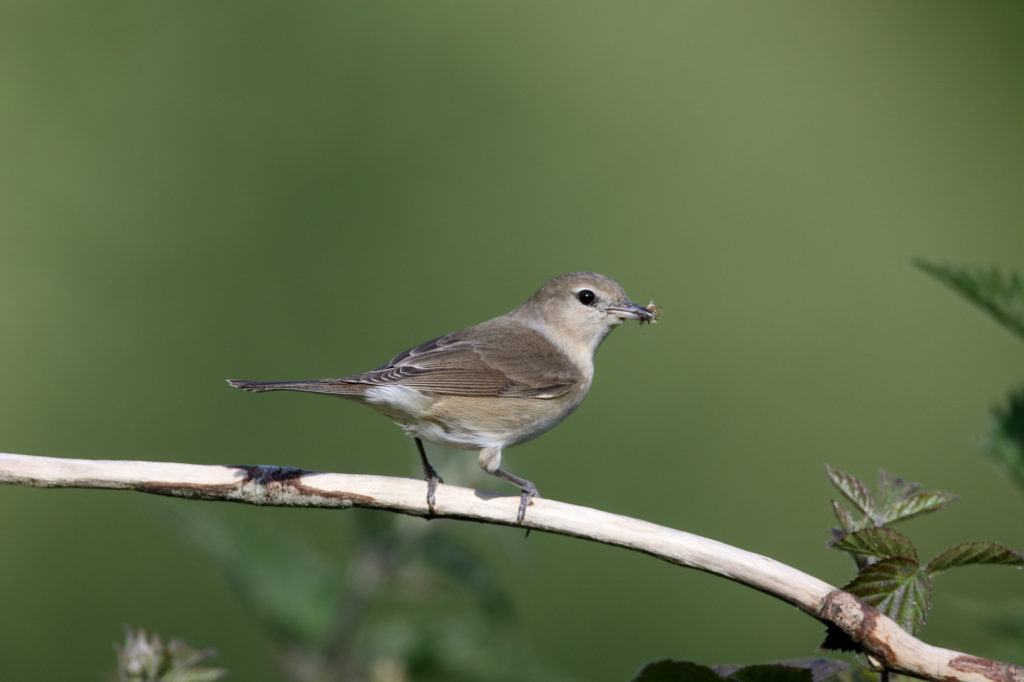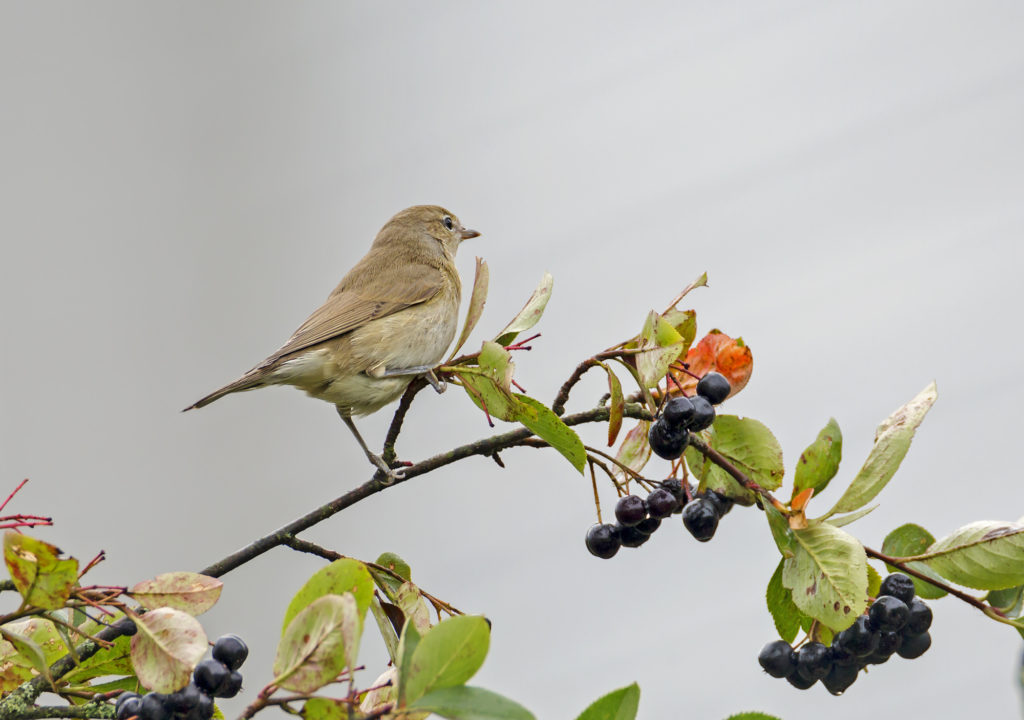The garden warbler (scientific name sylvia borin) is a small passerine bird in the Sylviidae family. It is native to Europe and northwest Africa, but it has been introduced to other regions, including North America, where it became well established by the early 20th century. Garden warblers are most often found in open areas such as gardens and orchards close to open woodland with some undergrowth. In the summer, it will join mixed flocks of smaller birds, but generally avoids flight from predators.
Identification
The garden warbler is a small bird with a length of and a weight of around 25g. Both sexes are similar in size and plumage and have no distinguishing features, making it hard to identify males from females.
The adult has a short straight bill, greenish-yellow upperparts and plain brown underparts.
Juveniles have drabber plumage than the adults, with only a yellowish face; they also have buff-yellow wingbars.

Where To See Them
Because of its preference for garden habitats, this is among the most common species of bird found near human habitation-probably because people provide food sources and nest boxes for these birds.

What Do Garden Warblers Eat?
The garden warbler is not picky about its diet, feeding on small insects such as flies, spiders, beetles and caterpillars, which are caught by flycatching or gleaned from the leaves of trees. It will also take berries, seeds and nectar during the breeding season. Nestlings have a more carnivorous diet, eating large numbers of insects. Because of its dependence on insect life, the garden warbler is one of the first birds to return to an area where insect populations are high.

Mating and Breeding
Garden warblers are a migratory species. It spends the winter season in sub-Saharan Africa, and breeds across temperate Europe and Asia, in open coppiced woodland and woodland edges with dense undergrowth and scrub.
The garden warbler is a long time resident of France and an unusual migrant and summer visitor to Britain, often seen around the east and south coasts. There are some breeding populations in Scotland and England, which migrate to continental Europe in spring and summer.
Birds from northern parts usually spend the winter further south, especially southwest England, where they are commonest from March–May.
In summer (around mid-July), it joins mixed flocks of smaller birds such as redpolls and can be found at lower levels than its winter haunts.

Where Do Garden Warblers Nest?
A monogamous bird, garden warblers breed in spring, choosing a tree for nesting, built from finer grasses and lined with soft material such as moss, hair or feathers. It constructs its cup-shaped nest using material collected by both parents, in an open location in bushes or trees. The female lays 3–4 speckled eggs. These are incubated by the female alone for 11–14 days, and the young chicks fledge after 10–14 more days.
How Is Their Song?
The garden warbler bird song is notably brief and simple, consisting of a few notes repeated with gaps between them. The notes themselves are drawn out, with a twang or quaver on the first and second notes and a trill between these.
What’s In The Name?
The garden warbler is named after its habit of singing in summer in gardens and orchards close to open woods, drawing on their song components.
Sources and References
- Identifying Garden Warbler and Blackcap Song – scottishwildlifetrust.org.uk
- Garden Warbler – wikipedia.org
Sam loves to learn about animals and their habitats. He has been a nature lover from a very young age, and has been writing papers and articles about wildlife for as long as he can remember.

I am sitting in a garden near Grand Anse Beach on Grenada and appear to be surrounded by Garden Warblers. I am a regular to the Windward and Leeward Islands and this is a first.